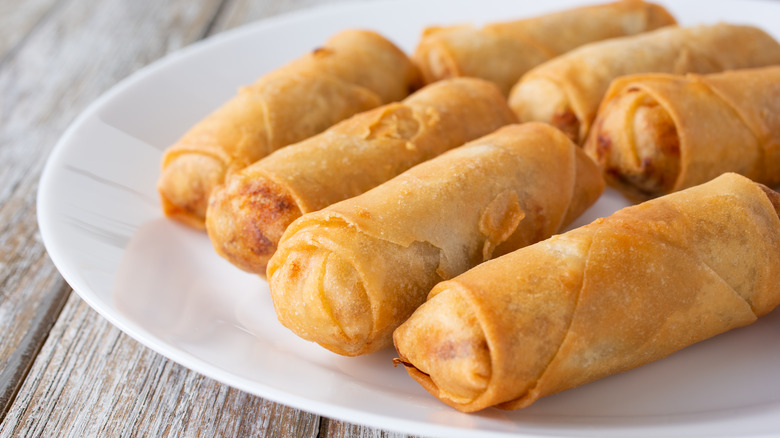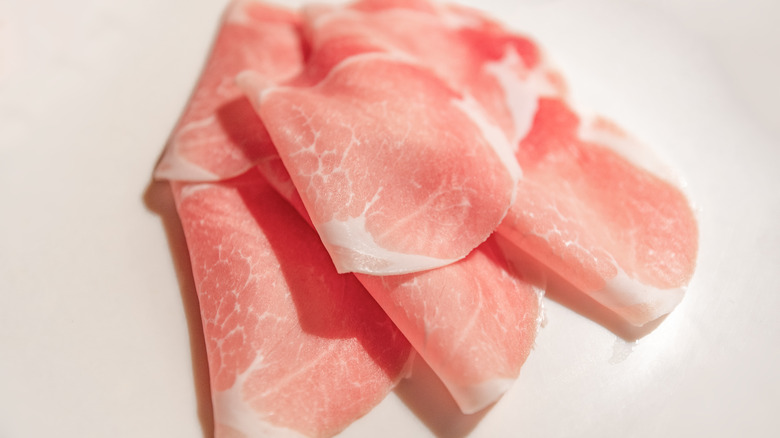The Original Egg Roll Recipe Contained This Salty Ingredient
Egg rolls are a Chinese restaurant staple that may or may not be Chinese in origin. While they resemble various other types of Asian dumplings such as spring rolls, egg rolls as we know them are more of a Chinese-American creation. To the best of our knowledge, they were most likely invented in this country by one of two Chinese chefs, either Lum Fong or Henry Low, back in the 1920s or '30s.
One ingredient that's notably absent in most egg rolls is any significant amount of egg. Some egg roll wrappers may contain this ingredient, but others do not. Even ones that do use eggs don't do so to a noticeable extent (unless you're vegan or egg-allergic, that is), and certainly not one that would warrant the inclusion of "egg" in the dish's name. Instead, it seems as if egg rolls may have inherited their moniker from an entirely different dish called "dan gun" (Chinese for "egg roll"). This recipe first appeared in a 1917 tome entitled "The Chinese Cook Book" that was authored by Chinese immigrant Shiu Wong Chan. His magnum opus is one of the earliest English-language Chinese cookbooks, but its egg roll recipe is nothing whatsoever like the namesake version we know today. Instead, Chan's egg roll more closely resembles a ham omelet.
These early egg rolls are a more literal interpretation of the name
As "The Chinese Cook Book" is now in the public domain (as are most works published prior to 1923), you may peruse it at your leisure to discover all manner of early 20th-century Chinese-American delights including recipes for quail, partridge, and even turtle soup, which we don't eat too much of these days. If you want to cut to the chase and see the proto-egg rolls, though, they're on page 136.
To make dan gun, you start by making a very thin omelet, then fill it with familiar egg roll ingredients like bean sprouts, mushrooms, and chicken, as well as one that's generally no longer found in egg rolls of today: chopped ham. While Chinese ham is traditionally called for, this ingredient is similar to country (no, not city) ham, so it could make an acceptable substitute. Roll up the cooked egg layer — thus making a very literal "egg roll" — and use egg white as a glue to seal the filling inside.
Chan suggests serving this dish with Chinese gravy, and helpfully provides a recipe on page 11 of his cookbook. One of the main ingredients, though, is a stock-like staple called "primary soup," for which you'll need to scroll to page 8. This, in turn leads you to Chinese sauce (page 10). For a simpler gravy, you can just mix a cup of chicken stock with a teaspoon of cornstarch and ½ teaspoon soy sauce, then add salt, sugar, and sesame oil to taste.

